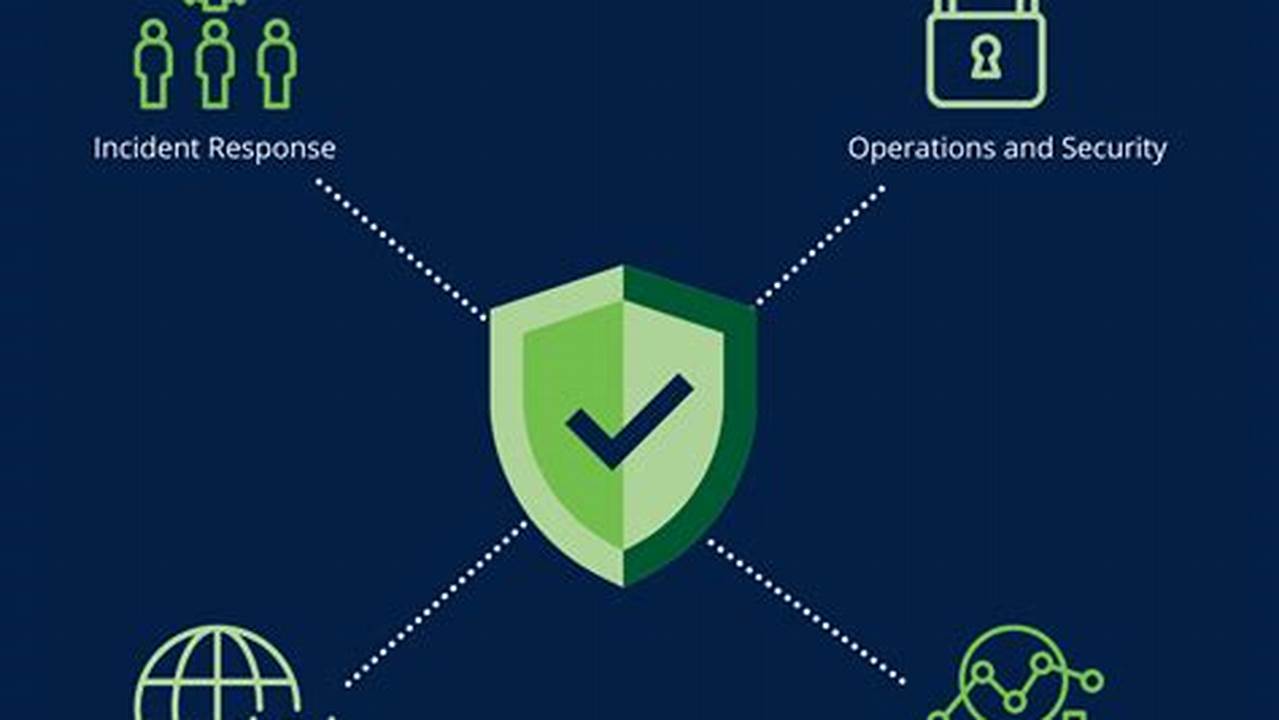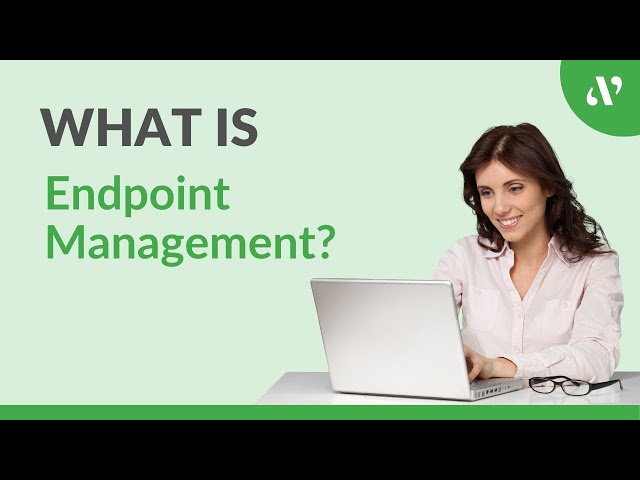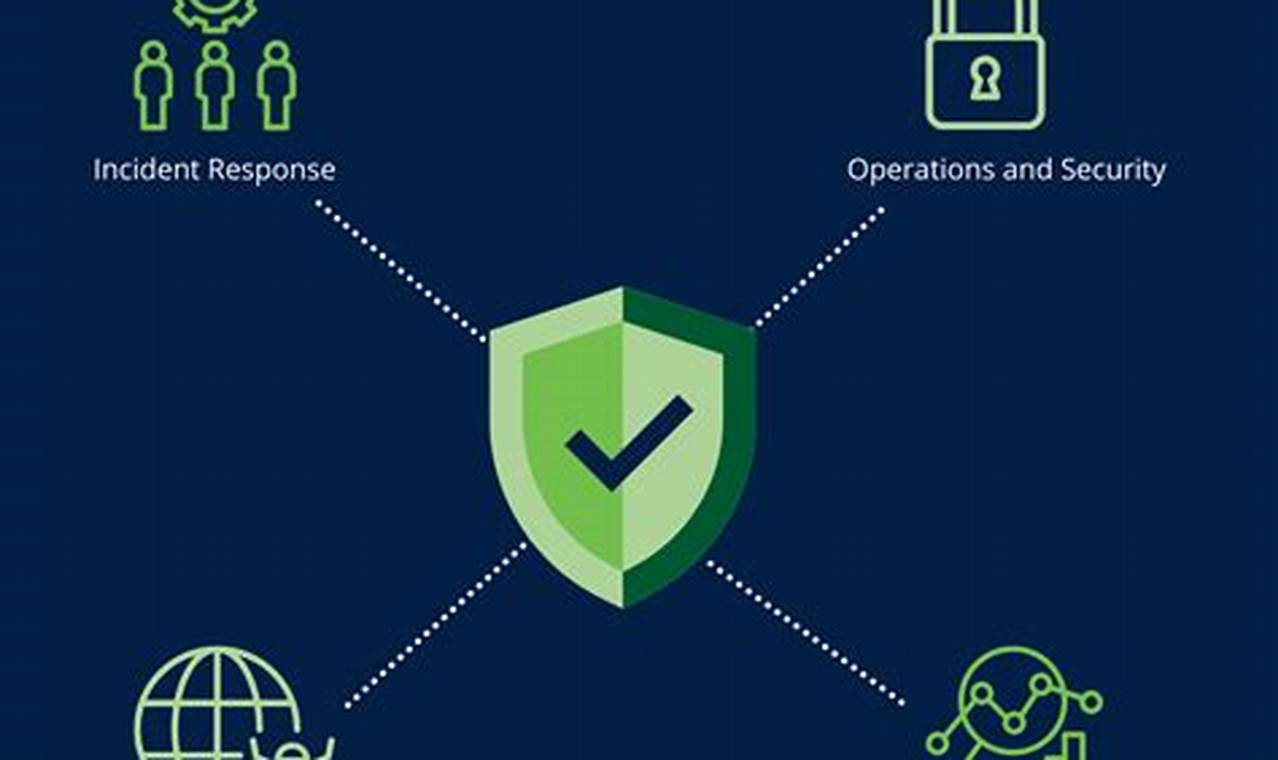
Endpoint security management is the practice of protecting endpoints, such as laptops, desktops, and mobile devices, from unauthorized access and malicious activity. It involves a combination of security technologies and processes designed to detect, prevent, and respond to threats that target endpoints. Endpoint security management is a critical component of any comprehensive cybersecurity strategy, as endpoints are often the primary targets of cyberattacks.
Endpoint security management solutions typically include features such as antivirus and anti-malware protection, intrusion detection and prevention, application control, data encryption, and remote management capabilities. These solutions can be deployed on-premises or in the cloud, and they can be managed by in-house IT staff or by managed security service providers (MSSPs).
Endpoint security management is essential for protecting organizations from a wide range of threats, including:
- Malware attacks
- Phishing attacks
- Ransomware attacks
- Zero-day attacks
- Advanced persistent threats (APTs)
By implementing a comprehensive endpoint security management solution, organizations can significantly reduce their risk of falling victim to a cyberattack.
Endpoint security management
Endpoint security management is a critical aspect of cybersecurity, as endpoints are often the primary targets of cyberattacks. Key aspects of endpoint security management include:
- Protection: Endpoint security solutions provide protection from malware, phishing attacks, ransomware, and other threats.
- Detection: Endpoint security solutions can detect suspicious activity and alert security teams.
- Response: Endpoint security solutions can help organizations respond to security incidents quickly and effectively.
- Prevention: Endpoint security solutions can help prevent security incidents from occurring in the first place.
- Management: Endpoint security solutions can be managed centrally, making it easier for organizations to protect their endpoints.
- Visibility: Endpoint security solutions provide visibility into the security posture of endpoints, making it easier for organizations to identify and address risks.
- Compliance: Endpoint security solutions can help organizations comply with regulatory requirements.
- Education: Endpoint security solutions can help organizations educate users about security best practices.
These key aspects of endpoint security management are essential for protecting organizations from a wide range of threats. By implementing a comprehensive endpoint security management solution, organizations can significantly reduce their risk of falling victim to a cyberattack.
Protection
Endpoint security management is essential for protecting organizations from a wide range of threats, including malware, phishing attacks, ransomware, and other threats. Endpoint security solutions provide protection from these threats by:
- Blocking malware: Endpoint security solutions can block malware from being downloaded and installed on endpoints.
- Detecting and removing malware: Endpoint security solutions can detect and remove malware that has already been installed on endpoints.
- Preventing phishing attacks: Endpoint security solutions can prevent phishing attacks by blocking phishing emails and websites.
- Blocking ransomware: Endpoint security solutions can block ransomware from encrypting files on endpoints.
These are just a few of the ways that endpoint security solutions can protect organizations from threats. By implementing a comprehensive endpoint security management solution, organizations can significantly reduce their risk of falling victim to a cyberattack.
Real-life example: In 2017, the WannaCry ransomware attack infected over 200,000 computers worldwide. Organizations that had implemented endpoint security solutions were able to protect their systems from the attack, while organizations that did not have endpoint security solutions in place were left vulnerable.
Practical significance: Endpoint security management is a critical component of any cybersecurity strategy. By implementing a comprehensive endpoint security management solution, organizations can protect their endpoints from a wide range of threats and reduce their risk of falling victim to a cyberattack.
Detection
Detection is a critical component of endpoint security management, as it allows organizations to identify and respond to security incidents quickly and effectively. Endpoint security solutions can detect suspicious activity in a variety of ways, including:
- Signature-based detection: Endpoint security solutions can detect malware and other threats by matching them against a database of known signatures.
- Heuristic-based detection: Endpoint security solutions can detect malware and other threats by analyzing their behavior and identifying suspicious patterns.
- Anomaly-based detection: Endpoint security solutions can detect malware and other threats by identifying deviations from normal behavior.
When endpoint security solutions detect suspicious activity, they can alert security teams so that they can investigate and take appropriate action. This can help organizations to prevent security incidents from occurring or to mitigate their impact.
Real-life example: In 2017, the WannaCry ransomware attack infected over 200,000 computers worldwide. Organizations that had implemented endpoint security solutions with detection capabilities were able to identify and block the attack, while organizations that did not have endpoint security solutions in place were left vulnerable.
Practical significance: Endpoint security management is a critical component of any cybersecurity strategy. By implementing endpoint security solutions with detection capabilities, organizations can significantly reduce their risk of falling victim to a cyberattack.
Response
Response is a critical component of endpoint security management, as it allows organizations to mitigate the impact of security incidents and prevent them from causing serious damage. Endpoint security solutions can help organizations respond to security incidents in a variety of ways, including:
- Automated response: Endpoint security solutions can be configured to automatically respond to security incidents, such as by blocking malicious traffic or quarantining infected files.
- Manual response: Endpoint security solutions can also provide security teams with the tools they need to manually respond to security incidents, such as by investigating suspicious activity or restoring compromised systems.
By implementing endpoint security solutions with response capabilities, organizations can significantly reduce the impact of security incidents and prevent them from causing serious damage.
Real-life example: In 2017, the WannaCry ransomware attack infected over 200,000 computers worldwide. Organizations that had implemented endpoint security solutions with response capabilities were able to quickly identify and block the attack, while organizations that did not have endpoint security solutions in place were left vulnerable.
Practical significance: Endpoint security management is a critical component of any cybersecurity strategy. By implementing endpoint security solutions with response capabilities, organizations can significantly reduce their risk of falling victim to a cyberattack and minimize the impact of security incidents.
Prevention
Prevention is a critical component of endpoint security management, as it allows organizations to stop security incidents from happening in the first place. Endpoint security solutions can help organizations prevent security incidents in a variety of ways, including:
- Blocking malicious traffic: Endpoint security solutions can block malicious traffic from reaching endpoints, such as by blocking access to malicious websites or IP addresses.
- Preventing malware infections: Endpoint security solutions can prevent malware infections by blocking malware from being downloaded and installed on endpoints.
- Enforcing security policies: Endpoint security solutions can enforce security policies, such as by preventing users from installing unauthorized software or accessing sensitive data.
By implementing endpoint security solutions with prevention capabilities, organizations can significantly reduce their risk of falling victim to a cyberattack.
Real-life example: In 2017, the WannaCry ransomware attack infected over 200,000 computers worldwide. Organizations that had implemented endpoint security solutions with prevention capabilities were able to block the attack, while organizations that did not have endpoint security solutions in place were left vulnerable.
Practical significance: Endpoint security management is a critical component of any cybersecurity strategy. By implementing endpoint security solutions with prevention capabilities, organizations can significantly reduce their risk of falling victim to a cyberattack and prevent security incidents from occurring in the first place.
Management
Centralized management is a critical aspect of endpoint security management, as it allows organizations to manage all of their endpoint security solutions from a single console. This makes it easier to deploy and update endpoint security solutions, as well as to monitor and manage security events. Centralized management can also help organizations to improve their security posture by ensuring that all endpoints are protected with the latest security updates and patches.
- Improved security: Centralized management can help organizations to improve their security posture by ensuring that all endpoints are protected with the latest security updates and patches.
- Reduced costs: Centralized management can help organizations to reduce costs by eliminating the need for multiple security consoles and reducing the time spent on managing endpoint security solutions.
- Increased efficiency: Centralized management can help organizations to increase efficiency by simplifying the process of deploying and updating endpoint security solutions.
- Improved compliance: Centralized management can help organizations to improve compliance with regulatory requirements by providing a single view of all endpoint security events.
Overall, centralized management is a critical aspect of endpoint security management that can help organizations to improve their security posture, reduce costs, increase efficiency, and improve compliance.
Visibility
Visibility is a critical component of endpoint security management, as it allows organizations to see what is happening on their endpoints and to identify and address risks. Endpoint security solutions provide visibility into the security posture of endpoints by:
- Monitoring endpoint activity: Endpoint security solutions can monitor endpoint activity, such as file access, network traffic, and application usage.
- Detecting suspicious activity: Endpoint security solutions can detect suspicious activity, such as attempts to access sensitive data or to install unauthorized software.
- Reporting on endpoint security events: Endpoint security solutions can report on endpoint security events, such as malware infections and security breaches.
By providing visibility into the security posture of endpoints, endpoint security solutions can help organizations to identify and address risks before they can cause damage. For example, if an endpoint security solution detects that an endpoint is infected with malware, the organization can take steps to remove the malware and prevent it from spreading.
Endpoint security management is essential for protecting organizations from a wide range of threats. By implementing endpoint security solutions that provide visibility into the security posture of endpoints, organizations can significantly reduce their risk of falling victim to a cyberattack.
Compliance
Endpoint security management plays a crucial role in ensuring compliance with regulatory requirements. Organizations are subject to various regulations and standards that mandate the protection of sensitive data and systems. Endpoint security solutions can assist organizations in meeting these compliance obligations by providing features and capabilities that align with regulatory frameworks.
-
Data protection regulations
Endpoint security solutions can help organizations protect sensitive data by encrypting it, both at rest and in transit. They can also enforce access controls to prevent unauthorized individuals from accessing or modifying data. This is essential for compliance with regulations such as the General Data Protection Regulation (GDPR) and the California Consumer Privacy Act (CCPA).
By implementing endpoint security solutions that support compliance requirements, organizations can reduce their risk of non-compliance and associated penalties. Endpoint security management is, therefore, a critical component of a comprehensive compliance strategy.
Education
Educating users about security best practices is a critical component of endpoint security management. Endpoint security solutions can play a vital role in this process by providing organizations with the tools and resources they need to educate users about security risks and how to protect themselves from them.
- Security awareness training: Endpoint security solutions can provide organizations with security awareness training materials that can be used to educate users about security risks and best practices. This training can cover a variety of topics, such as phishing, malware, and social engineering.
- Simulated phishing attacks: Endpoint security solutions can also be used to conduct simulated phishing attacks on users. This can help organizations to identify users who are susceptible to phishing attacks and to provide them with additional training.
- Real-time security alerts: Endpoint security solutions can provide users with real-time security alerts about potential threats. This can help users to stay informed about the latest security threats and to take steps to protect themselves.
- Security dashboards: Endpoint security solutions can provide organizations with security dashboards that can be used to track the effectiveness of their security awareness training programs. This data can be used to identify areas where additional training is needed.
By providing organizations with the tools and resources they need to educate users about security best practices, endpoint security solutions can help to improve the overall security posture of an organization.
Frequently Asked Questions about Endpoint Security Management
Endpoint security management (ESM) involves the implementation of a robust strategy to safeguard endpoints like laptops, desktops, and mobile devices from unauthorized access, malware, and other threats. It’s a crucial aspect of cybersecurity, and various questions arise regarding its significance, implementation, and best practices.
Question 1: Why is endpoint security management important?
Answer: ESM is essential because endpoints are primary targets for cyberattacks. They often contain sensitive data and provide access to corporate networks. Effective ESM minimizes the risk of data breaches, malware infections, and other security incidents that can disrupt operations and damage an organization’s reputation.
Question 2: What are the key components of an endpoint security management solution?
Answer: A comprehensive ESM solution typically includes features such as antivirus and anti-malware protection, intrusion detection and prevention systems (IDS/IPS), application control, data encryption, patch management, and remote management capabilities. It provides a holistic approach to endpoint protection.
Question 3: How can organizations implement endpoint security management effectively?
Answer: Effective ESM implementation involves defining clear policies, deploying endpoint security software, conducting regular security assessments and audits, educating users about security best practices, and continuously monitoring and updating the security infrastructure. A layered approach that combines multiple security technologies and strategies is recommended.
Question 4: What are common challenges faced in endpoint security management?
Answer: Organizations often encounter challenges such as the increasing sophistication of cyber threats, the proliferation of endpoint devices, and the need to balance security with user productivity. Additionally, managing endpoints in remote and hybrid work environments can pose unique difficulties.
Question 5: What are the benefits of using a managed endpoint security service provider (MSSP)?
Answer: MSSPs offer expertise, economies of scale, and access to advanced security technologies. They can help organizations overcome resource constraints, enhance their security posture, and stay updated with the latest threats and mitigation strategies.
Question 6: How does endpoint security management contribute to regulatory compliance?
Answer: ESM plays a vital role in regulatory compliance by ensuring that organizations meet industry standards and legal requirements related to data protection and privacy. It helps organizations safeguard sensitive information, prevent data breaches, and respond effectively to security incidents.
Summary: Endpoint security management is a critical cybersecurity practice that involves protecting endpoints from various threats. By implementing comprehensive ESM solutions, conducting regular security assessments, educating users, and partnering with MSSPs when necessary, organizations can significantly reduce their risk of security breaches and maintain a strong security posture.
Transition to the next article section: Endpoint security management is an ongoing process that requires continuous monitoring, adaptation, and investment. Organizations must stay abreast of evolving threats, industry best practices, and technological advancements to ensure the effectiveness of their endpoint security strategies.
Endpoint Security Management Best Practices
Endpoint security management plays a pivotal role in safeguarding organizations from a wide range of cyber threats. By following these best practices, organizations can significantly enhance their endpoint security posture:
Tip 1: Deploy a layered security solution: Implement a combination of security technologies such as antivirus, anti-malware, intrusion detection/prevention systems, and data encryption to provide comprehensive protection against various threats.
Tip 2: Enforce strong password policies: Require complex passwords, enable two-factor authentication, and enforce regular password resets to prevent unauthorized access to endpoints.
Tip 3: Keep software and systems up to date: Regularly apply software updates and security patches to address vulnerabilities that could be exploited by attackers.
Tip 4: Educate users about security best practices: Conduct regular security awareness training to educate users about phishing, social engineering, and other common attack vectors.
Tip 5: Monitor and respond to security events promptly: Implement a security monitoring system to detect and respond to security incidents in a timely manner, minimizing potential damage.
Tip 6: Use endpoint detection and response (EDR) tools: EDR tools provide advanced threat detection and response capabilities, enabling organizations to quickly identify and contain malicious activities.
Tip 7: Implement network segmentation: Divide the network into smaller segments to limit the spread of malware and other threats in case of a security breach.
Tip 8: Back up data regularly: Create regular backups of critical data to ensure that it can be recovered in the event of a data loss incident.
Summary: By implementing these best practices, organizations can significantly strengthen their endpoint security posture, reducing the risk of successful cyberattacks and protecting their valuable data and systems.
Transition to the article’s conclusion: Endpoint security management is an ongoing process that requires continuous monitoring, adaptation, and investment. Organizations must stay abreast of evolving threats, industry best practices, and technological advancements to ensure the effectiveness of their endpoint security strategies.
Endpoint Security Management
Endpoint security management has emerged as a cornerstone of modern cybersecurity strategies. This article has delved into various aspects of endpoint security management, emphasizing its significance, components, implementation challenges, and best practices. By effectively managing endpoint security, organizations can proactively protect their endpoints from a wide range of threats and maintain a strong security posture.
As the threat landscape continues to evolve, endpoint security management will undoubtedly remain a critical area of focus for organizations. By staying abreast of emerging threats, adopting innovative security technologies, and continuously monitoring and improving their security infrastructure, organizations can ensure the resilience of their endpoints and safeguard their valuable data and systems.
Youtube Video:


